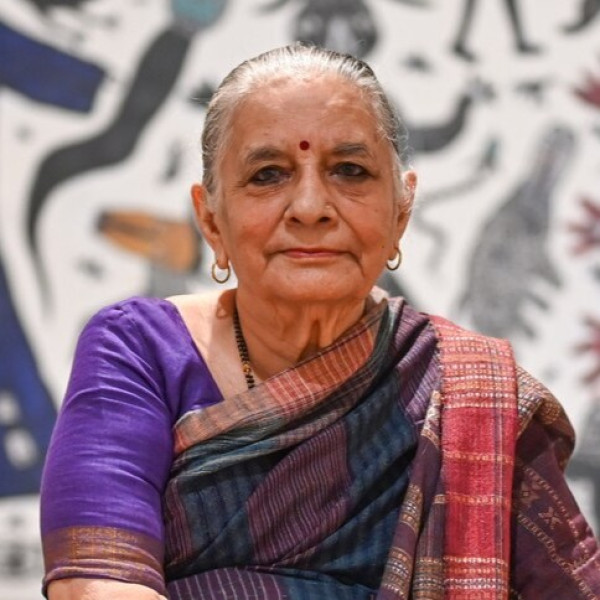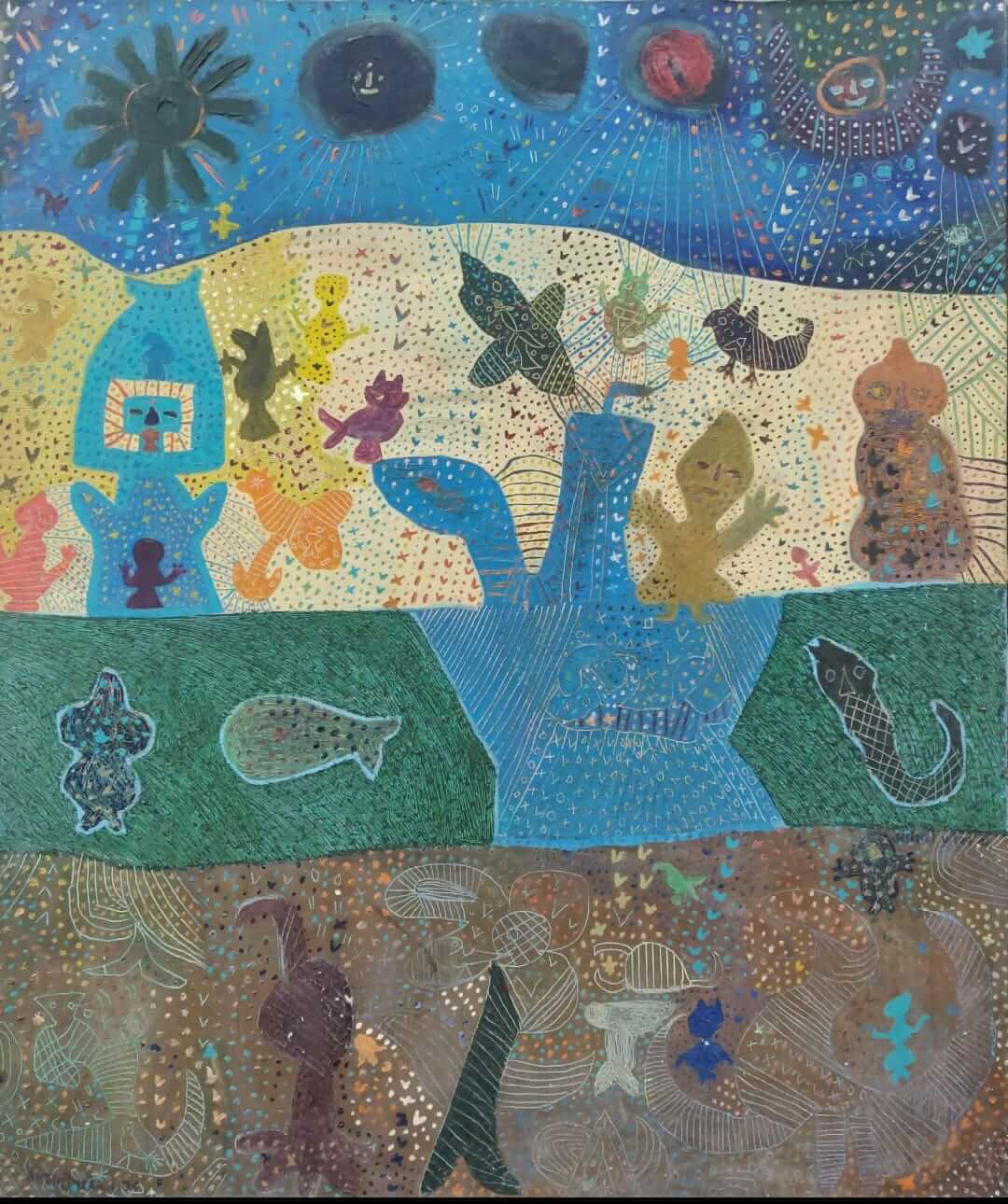Madhvi Parekh
ABOUT
"Everything coexists in my art... animals, birds, human beings, all of us lived together, we were all intertwined."
Painter | India
Born in 1942

Madhvi Parekh is a pioneering figure in Indian art, celebrated for defining the unique space of "Folk Modernism." Entirely self-taught, her distinctive style emerged not from academic training but from the deep well of her childhood memories in a rural Gujarati village, where local folklore, religious rituals, and traditional crafts like Rangoli were her first sources of visual language. Her work is a captivating visual tapestry that seamlessly blends the real with the fantastical, populated by hybrid creatures, mythic figures, and symbols drawn from Puranic tales. Parekh’s mature canvases are instantly recognizable for their dense, fragmented compositions, which often disregard conventional scale and perspective, allowing multiple narratives to coexist in a fluid dreamscape. Stylistically, she was influenced by the modernist vocabulary of artists like Paul Klee and Joan Miró, transforming their geometric abstraction into something uniquely Indian through the use of dots, dashes, and rhythmic patterns that often resemble the intricate textures of Kantha embroidery. This technique led to her famous assertion, "I like to create magic on canvas, giving it the illusion of an embroidered fabric from a distance." Her art, which remains a deeply personal outpouring of her inner world, stands as a powerful testament to the vitality and emancipatory potential of the self-taught artist in contemporary Indian modernism.


